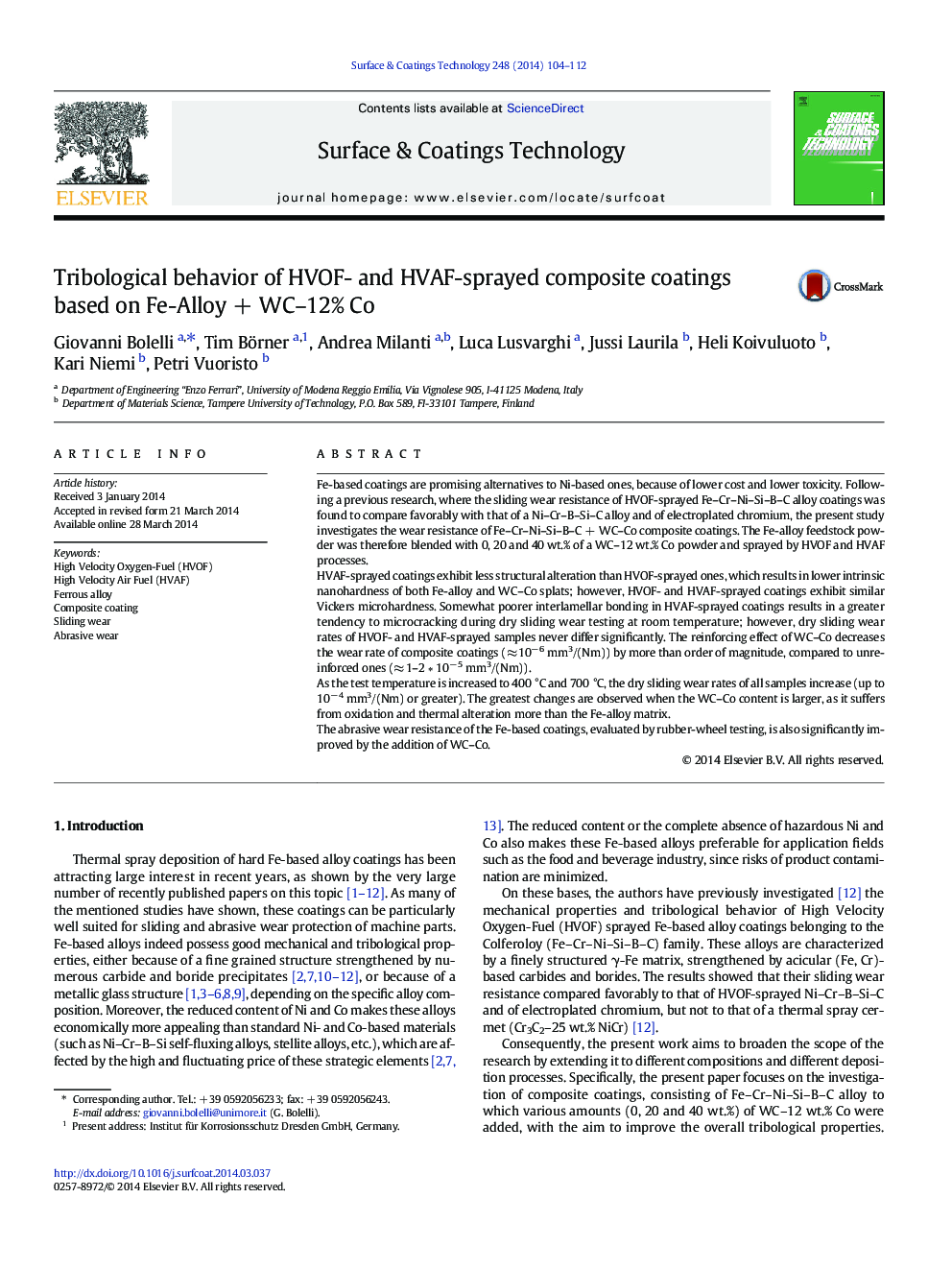| کد مقاله | کد نشریه | سال انتشار | مقاله انگلیسی | نسخه تمام متن |
|---|---|---|---|---|
| 1657560 | 1517630 | 2014 | 9 صفحه PDF | دانلود رایگان |

• WC–Co enhances the sliding and abrasive wear resistance of Fe-alloy coatings at RT.
• HVOF and HVAF coatings exhibit similar performances in sliding and abrasive wear.
• The strengthening effectiveness of WC–Co at high temperature is impaired by oxidation.
• Interlamellar microcracking occurs during sliding wear of HVAF coatings at RT.
• At high temperature, abrasive grooving always dominates; microcracking is suppressed.
Fe-based coatings are promising alternatives to Ni-based ones, because of lower cost and lower toxicity. Following a previous research, where the sliding wear resistance of HVOF-sprayed Fe–Cr–Ni–Si–B–C alloy coatings was found to compare favorably with that of a Ni–Cr–B–Si–C alloy and of electroplated chromium, the present study investigates the wear resistance of Fe–Cr–Ni–Si–B–C + WC–Co composite coatings. The Fe-alloy feedstock powder was therefore blended with 0, 20 and 40 wt.% of a WC–12 wt.% Co powder and sprayed by HVOF and HVAF processes.HVAF-sprayed coatings exhibit less structural alteration than HVOF-sprayed ones, which results in lower intrinsic nanohardness of both Fe-alloy and WC–Co splats; however, HVOF- and HVAF-sprayed coatings exhibit similar Vickers microhardness. Somewhat poorer interlamellar bonding in HVAF-sprayed coatings results in a greater tendency to microcracking during dry sliding wear testing at room temperature; however, dry sliding wear rates of HVOF- and HVAF-sprayed samples never differ significantly. The reinforcing effect of WC–Co decreases the wear rate of composite coatings (≈ 10− 6 mm3/(Nm)) by more than order of magnitude, compared to unreinforced ones (≈ 1–2 ∗ 10− 5 mm3/(Nm)).As the test temperature is increased to 400 °C and 700 °C, the dry sliding wear rates of all samples increase (up to 10− 4 mm3/(Nm) or greater). The greatest changes are observed when the WC–Co content is larger, as it suffers from oxidation and thermal alteration more than the Fe-alloy matrix.The abrasive wear resistance of the Fe-based coatings, evaluated by rubber-wheel testing, is also significantly improved by the addition of WC–Co.
Journal: Surface and Coatings Technology - Volume 248, 15 June 2014, Pages 104–112